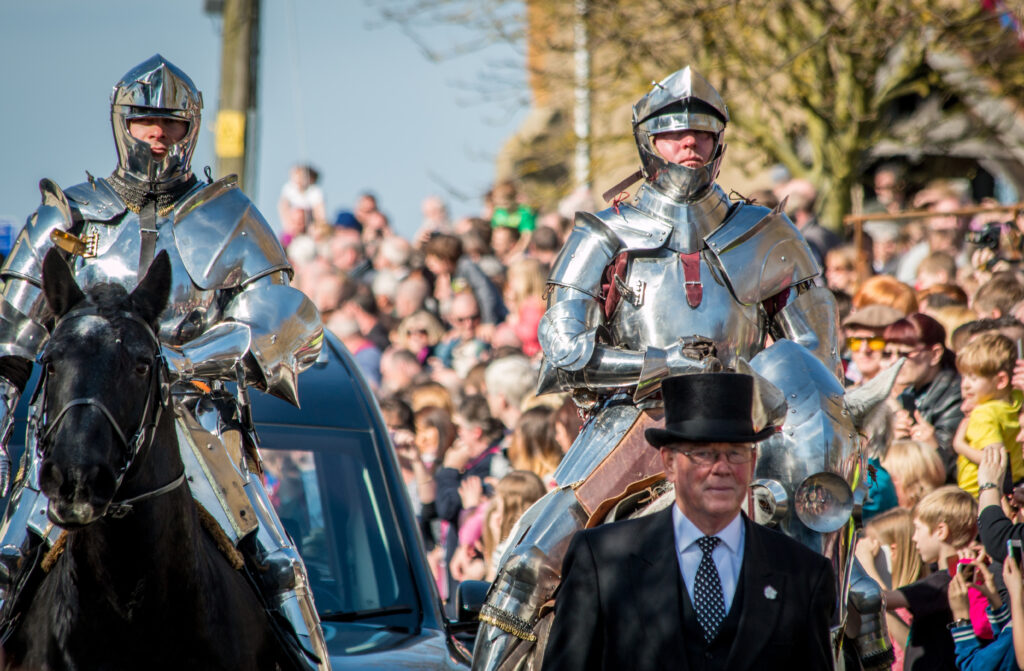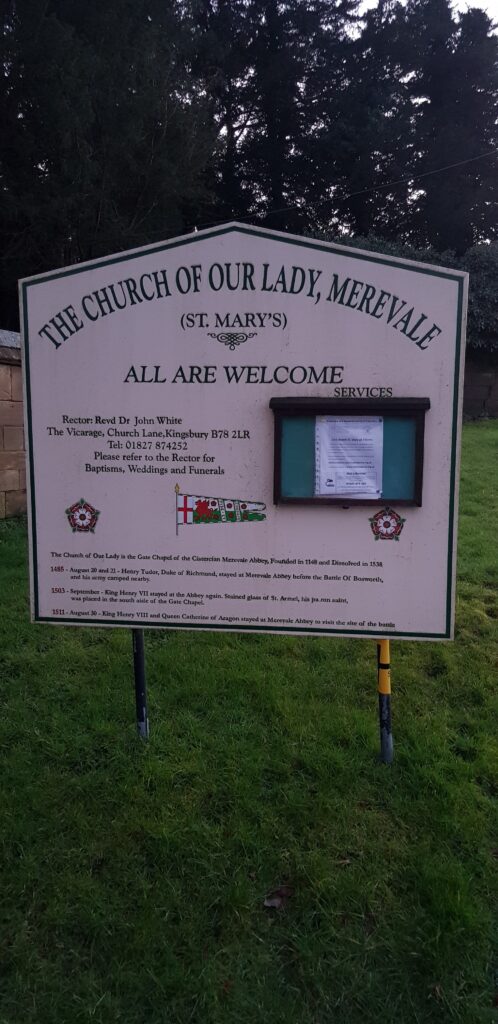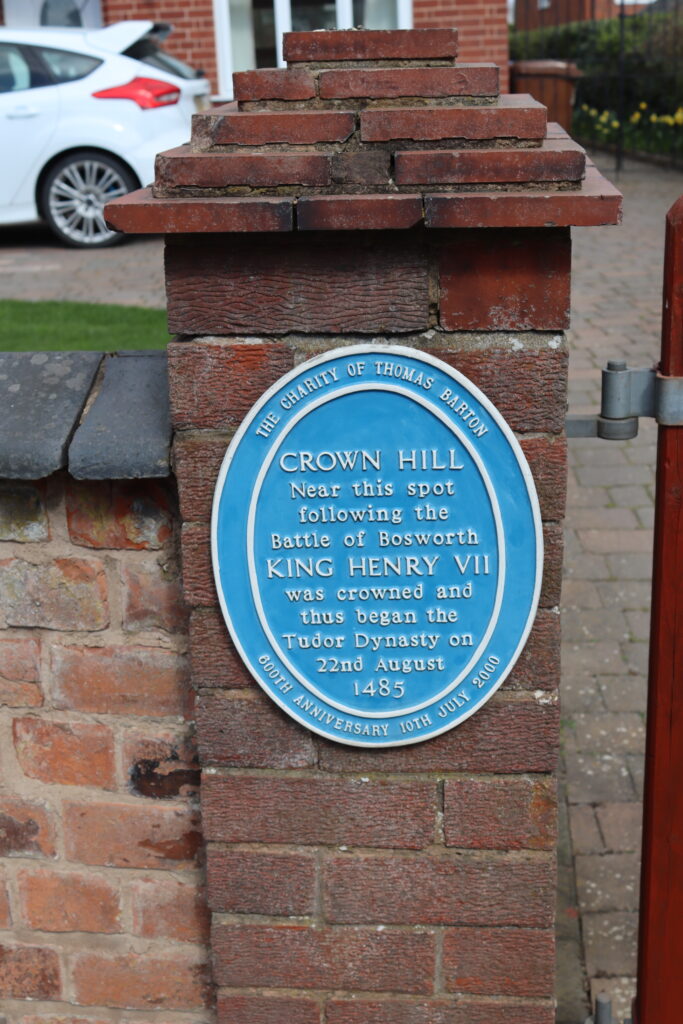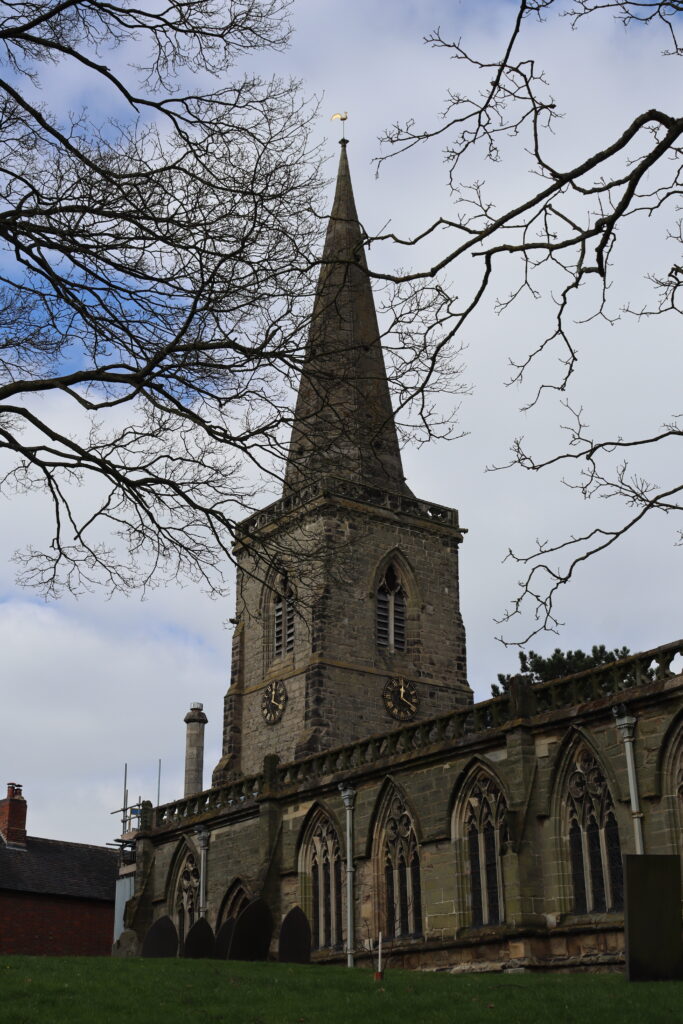A Memorable Day
For some time I had been considering the best place to park the car to attend the ceremony at Dadlington to mark the passage of the remains of Richard III from the site of battle near Fenn Lane Farm to Leicester Cathedral. The sensible decision eventually taken was to walk the short distance between the villages of Stoke Golding and Dadlington. Proceeding on foot, the country lanes became filled with a throng of people making for the same destination. Many would have walked from the nearby town of Hinckley. It was a truly unique moment in time.
At last the hearse with royal coffin enclosed and escorted by two men at arms on horseback and suited in period armour drew up behind the platform on the village green in Dadlington. There followed an open air service conducted by the clergy of the community. Hymns were sung – prayers said and due respect and reverence expressed. The ceremony completed, the cortege proceeded on its way to Leicester. Such ceremonies took place at various locations on the route. There are also, however, enduring links with the Tudors in the surrounding countryside.

Henry Tudor on that day in August 1485 had become king of an exhausted and ravaged nation – racked by so many years of ruinous civil war. He had passed through the village of Stoke Golding after the victory where a blue plaque marks the spot where Richard’s crown was reputedly placed on his head by Lord Stanley. Villagers who had watched the battle unfold from the roof of the village church – St Margaret of Antioch – were later recruited to bury the fallen from the battlefield. Property developers in Stoke Golding take note.
Henry Tudor stayed at Merevale Abbey near Atherstone the night before the fateful battle. He would return there in September 1503 where a stained glass of Saint Armel, his patron saint, was placed in the south aisle of the Gate Chapel of the Abbey – the Church of Our Lady. Henry VIII would in due course stay at Merevale Abbey with Catherine of Aragon on 30th August 1511 in order to visit the site of the battle. It would be relevant to look for historical accounts of such a visit. The church still stands today but the Abbey is entirely gone – a victim of the Dissolution of the Monasteries.
In this corner of Warwickshire around Atherstone, the writer George Eliot was aware of the presence of both ‘folk memory’ and ‘folk knowledge’ that was carried down between the generations. So it is of local details relating to the Battle of Bosworth – the actual paths taken by Henry Tudor and his army through the woods – the site of their camps and so on. With each passing generation, however, this pulse of information decreases.



